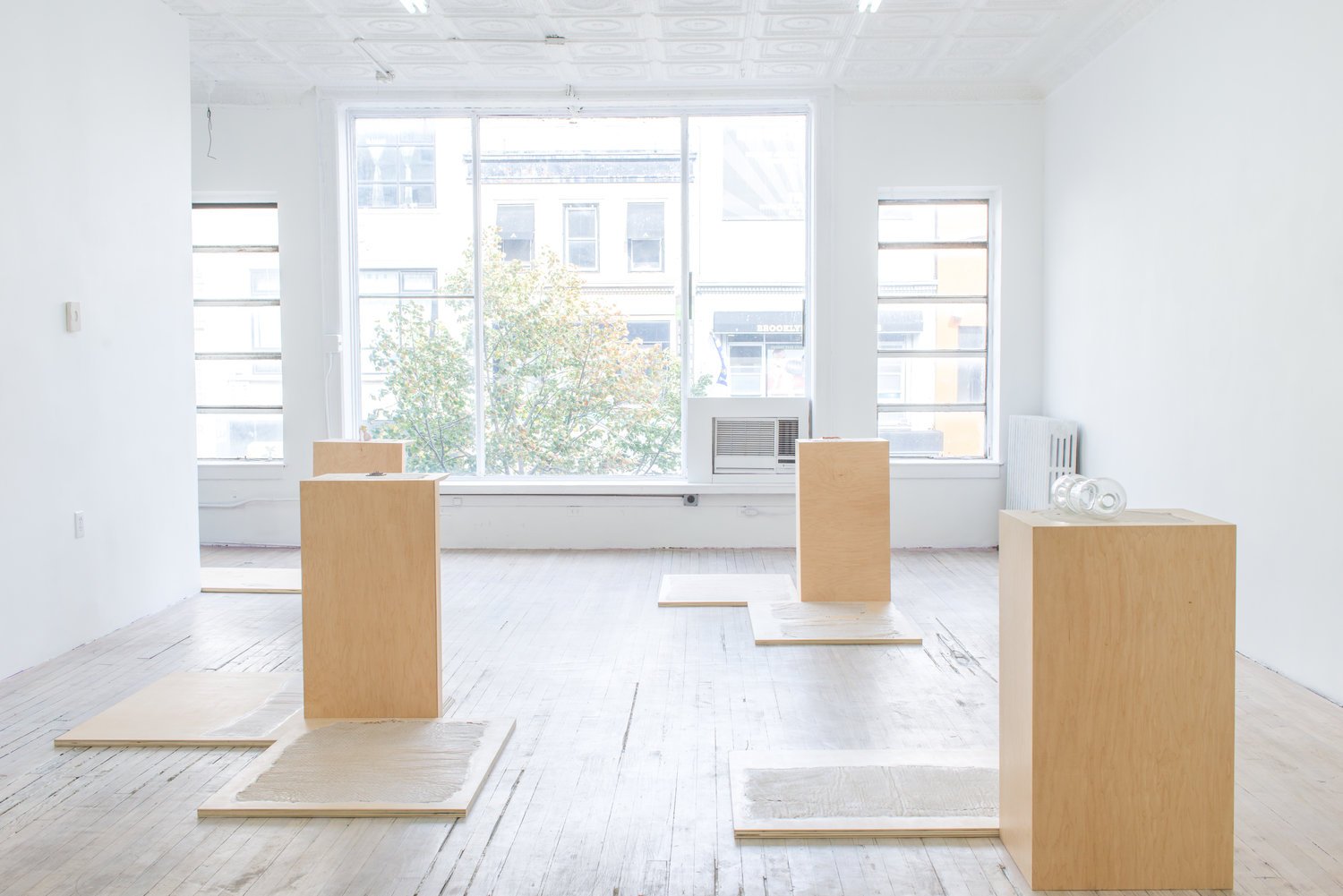Barb Smith
Cup
October 13 - November 12, 2017
“If it is a human thing to do to put something you want, because it's useful, edible, or beautiful, into a bag, or a basket, or a bit of rolled bark or leaf, or a net woven of your own hair, or what have you, and then take it home with you, home being another, larger kind of pouch or bag, a container for people, and then later on you take it out and eat it or share it or store it up for winter in a solider container or put it in the medicine bundle or the shrine or the museum, the holy place, the area that contains what is sacred, and then next day you probably do much the same again--if to do that is human, if that's what it takes, then I am a human being after all. Fully, freely, gladly, for the first time.” - Ursula K. Le Guin, The Carrier Bag Theory of Fiction
CUP is the first solo exhibition by Barb Smith at 315 Gallery, composed of a new body of sculptural work, custom floor tiles, and video.
A cup is a vessel, a thing that holds, a receiver. This everyday container is caught within conflicting origin stories about the material history of human evolution. In her 1986 essay The Carrier Bag Theory of Fiction, Ursula K. Le Guin excavates the Carrier Bag Theory of evolution, which provides a counter-narrative to long-held anthropological theories that assert the first tools created by humans were weapons – an origin story that centers the hunter, the hero. The Carrier Bag Theory posits instead that that the first human device was not weapon but in fact a container or basket used to gather and bring home food and other resources. Before the knife, the ax, the blade, or blunt object of dominance and destructive force, was the carrier, the holder, the receptacle. This account offers a more inclusive narrative that centers the gatherer, the nurturer, in place of the violent aggressor.
The work in CUP examines, interrogates, and sometimes reshapes the memories that objects contain; items accumulate to tell a more intimate kind of origin story that is both personal and collective. Central to the exhibition are five pedestals that each display a singular object such as a porcelain kissing angel, an elongated glass form produced by a of tug of war, or a miniature chess set made out of ammunition. The curious viewer will discover that there is more to see: found objects that have been altered; remnants of material processes gone awry; baskets, pinch pots, and other vessels; impressions of things no longer present; fictional game spaces; bullet shells, broken limbs, and hand painted bruises; felled, smashed, and pierced objects; support structures; escape routes; and things mended.
A video of Queen Anne’s Lace quivering in the breeze and an abstracted votive for healing accompany the object-vignettes. Together, the works signal the entanglements of trauma and healing, protection and vulnerability, that reoccur in Smith’s ongoing mining of the emotions and histories that are held simultaneously within objects and in the body. Exploring what a vessel contains, CUP reflects the corporeal, psychological, and social impacts of carrying the personal and inherited histories that accumulate over many lifetimes.
Barb Smith No. 7 Queen Anne's Lace, 2017 63.5 x 4.5 x 2 inches
Barb Smith No. 2 Model of a Chess Scene, 2017 37.5 x 20 x 15 inches (dimensions variable)
Barb Smith No. 2 Model of a Chess Scene (detail), 2017
Barb Smith No. 3 Kissing Angel, 2017 37 x 20 x 15 inches (dimensions variable)
Barb Smith No. 2 Model of a Chess Scene (detail), 2017
Barb Smith No. 3 Kissing Angel, 2017 37 x 20 x 15 inches (dimensions variable)
Barb Smith No.1, 2017 37 x 20 x 15 inches (dimensions variable)
Barb Smith No. 6 Votive Offering (small mirror), 2017 5.5 x 3.5 x 1 inches
Barb Smith No. 5 Tug of War (detail), 2017 41 x 20 x 15 inches (dimensions variable)
Barb Smith No. 5 Tug of War (detail), 2017
Barb Smith No. 5 Tug of War (detail), 2017
Barb Smith No. 4, 2017 37.5 x 20 x 15 inches (dimensions variable)
Barb Smith No. 4, 2017 37.5 x 20 x 15 inches (dimensions variable)
Barb Smith No. 4, 2017 37.5 x 20 x 15 inches (dimensions variable)




















